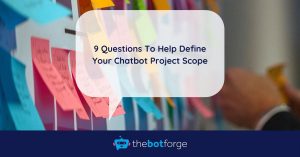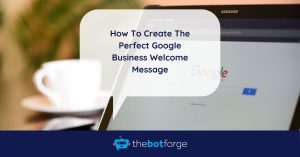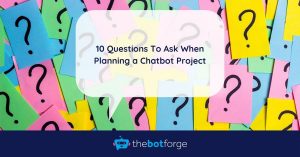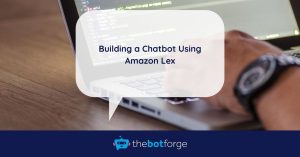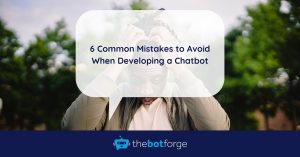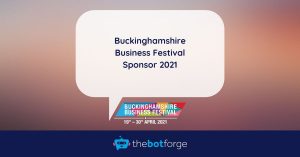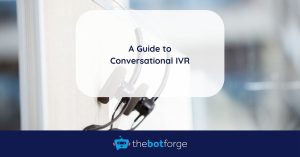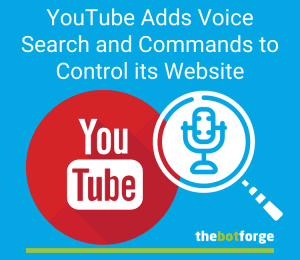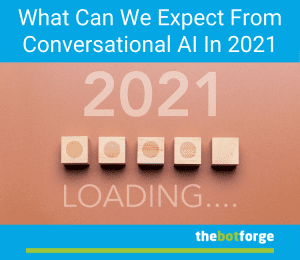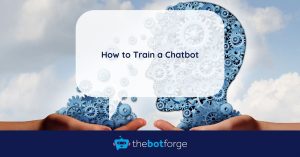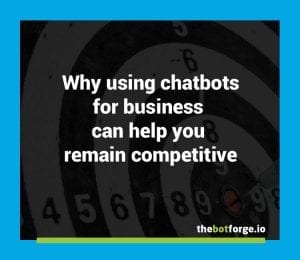Conversational UI
9 Questions To Help Define Your Chatbot Project Scope [2023 Update]
Defining Your Chatbot Project Scope So what is a scope of work? In terms of conversational AI development, a scope of work typically outlines the specific tasks and objectives that will be accomplished during the project. This can include details such as the functionality of the chatbot, the technologies and platforms to be used, the…
Read MoreHow Much Does it Cost To Build a Chatbot in 2023?
Tips. Insight. Offers. Are You In? Your Email Address Please enter a valid email address. I agree that The Bot Forge can email me news, tips, updates & offers. I know that I can unsubscribe at any time. You must accept the Terms and Conditions. Sign Me Up Thank you for subscribing! Something went wrong.…
Read MoreHow To Create The Perfect Google Business Welcome Message
Why Google Business Messages? Google Maps has 155 million monthly users and it’s estimated that Google handles 5.6 billion searches per day – two trillion searches a year! Connecting with your customers at these two touchpoints is more beneficial than ever. Gone are the days when you needed to send customers to a website or social media profile…
Read More10 Questions To Ask When Planning a Chatbot Project
Tips. Insight. Offers. Are You In? Your Email Address Please enter a valid email address. I agree that The Bot Forge can email me news, tips, updates & offers. I know that I can unsubscribe at any time. You must accept the Terms and Conditions. Sign Me Up Thank you for subscribing! Something went wrong.…
Read MoreBuilding a Chatbot Using Amazon Lex
What is Amazon Lex Amazon Lex is a service by AWS for building conversational interfaces into any application using voice and text. Lex has quickly become popular among chatbots enthusiasts looking to leverage the technology which powers Alexa. Users can be up and running within minutes with no upfront costs. Amazon Lex has been in…
Read More6 Common Mistakes to Avoid When Developing a Chatbot
We are experts in developing chatbots so we know If you are looking to streamline certain operations of your business, developing a chatbot is a great way to go about it. After all, you can use technologies such as artificial intelligence (AI) and natural language processing (NLP) so that it can follow different types of…
Read MoreBuckinghamshire Business Festival Sponsor 2021
We are proud to be a Buckinghamshire Business Festival sponsor this year We are proud to be sponsoring the 2021 Buckinghamshire Business Festival, running from April 19th – 30th. The festival has been organised by Buckinghamshire Business First, with a packed schedule of events and opportunities to make new connections across the two weeks. Look…
Read MoreA Guide to Conversational IVR
So what is conversational IVR (Interactive Voice Response) and why should businesses care. According to Forrester Research, customers expect easy and effective customer service that builds positive emotional connections every time they interact with a brand or organization. For businesses improving their organization’s customer experience is a high priority. Additionally, 40% of surveyed business leaders…
Read MoreYouTube Adds Voice Search & Commands
YouTube uses voice search technology to augment it’s website user interface. We covered this concept briefly in our What Can We Expect From Conversational AI In 2021 post. One of our predictions for 2021 was the rise in the popularity of adding voice capabilities to software products. Specifically leveraging this sort of technology in touch…
Read MoreWhat Can We Expect From Conversational AI in 2021?
The use of conversational AI will continue to rise Yes we are going to see continued growth in conversational AI in 2021. It’s predicted that 1.4 billion people will use chatbots on a regular basis with $5 billion projected to be invested in chatbots by 2021. Voice assistant use will also grow. The use of…
Read MoreHow to Train a Chatbot
Training data for chatbots. I’m going to look at the challenges in creating a chatbot which can answer questions about its specific domain effectively. In particular, I’m going to look at the challenges and possible solutions in creating a chatbot with a reasonable conversational ability at their initial implementation. Every chatbot project is different but…
Read MoreKey Features of Conversational AI Platforms
We build a lot of different types of chatbots at The Bot Forge and deliver these to a variety of channels such as websites, Facebook Messenger, Slack, and WhatsApp. To create our chatbots we often use different AI platforms which offer more suitable features for a specific project. All the major cloud and open-source…
Read MoreWhy Business Chatbots Give You a Competitive Edge
Chatbots For Business The business landscape is evolving faster and faster, we look at using chatbots for business to help you remain competitive. There is so much coverage of artificial intelligence technology and chatbots these days There is no doubt that chatbots are big news for many different industries, from e-commerce and fashion to healthcare…
Read More
